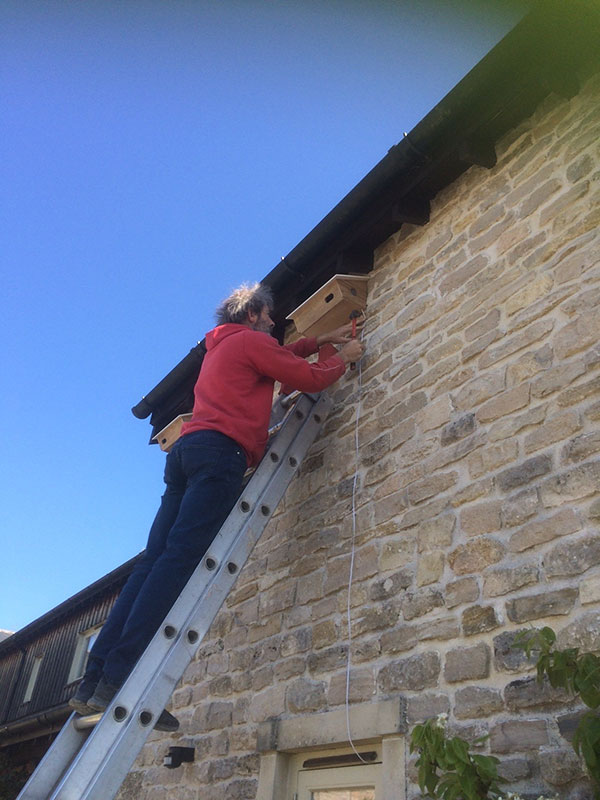
Swifts, intrepid migratory birds who have graced our summer skies for thousands of years, are in trouble. Numbers have more than halved nationally in the UK between 1995-2018.1 Yet part of the solution, providing nesting sites in our homes and other buildings, is easy to do. Step in local conservation heroes, Tim and Roger from Hampshire Swifts who arrived at my house at 9am on a Saturday morning in late April.
Three nesting boxes were seamlessly installed just below the eaves of my home looking as though they had always belonged there by Roger, a builder during the week, who gives his time voluntarily to the swift cause. As swifts are social birds and like to breed near others, a swift song calling system was added to attract new arrivals.
Installation complete, I accompanied the cheery duo as we made our way around a patchwork of houses in the nearby village of Tisbury. More than twenty homes and community spaces have stepped forward to be part of a local swift project launched by local Tisbury & District Natural History Society. Expert advice by Tim, a trustee of Hampshire Swifts, and free installation of the affordable boxes (£30) made by Roger made it easy for people to participate. The project also includes mapping nesting sites and the size of the existing swift population and will monitor changes over the coming years.
Swifts have shared our buildings for hundreds of years nesting in gaps and holes well above ground level and in other older structures such as warehouses and church towers. They arrive in the UK from sub-Saharan Africa in May to breed departing in July or early August, a round trip of some 14,000 miles. Swifts only start breeding when they are four years old and pair for life returning to the same nesting site each year. If their site is disturbed or destroyed, they rarely relocate to a new nest site for that season.
The destruction of old buildings, house renovations before or during the breeding season and new building techniques are thought to be a significant contributor to the decline in swift numbers. Fortunately, swifts take readily to special nesting boxes and can also be accommodated through making minor modifications to soffits or building special swifts nesting bricks into new homes – helping to continue the line of coexistence between man and birds.
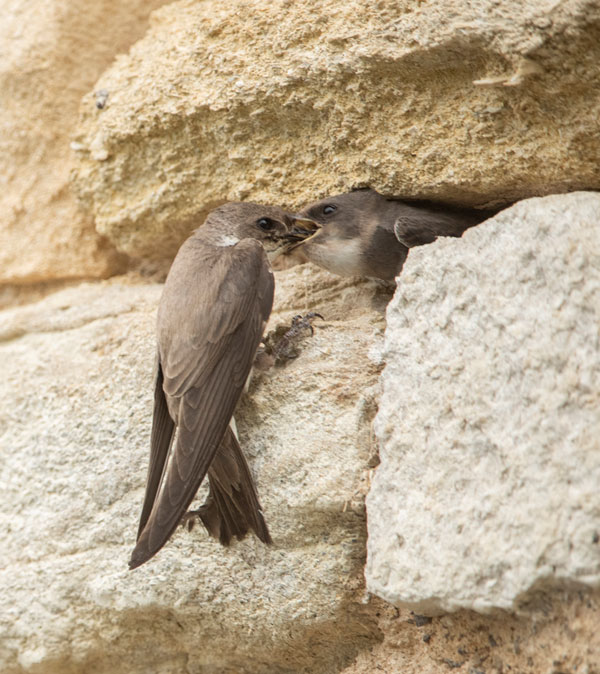
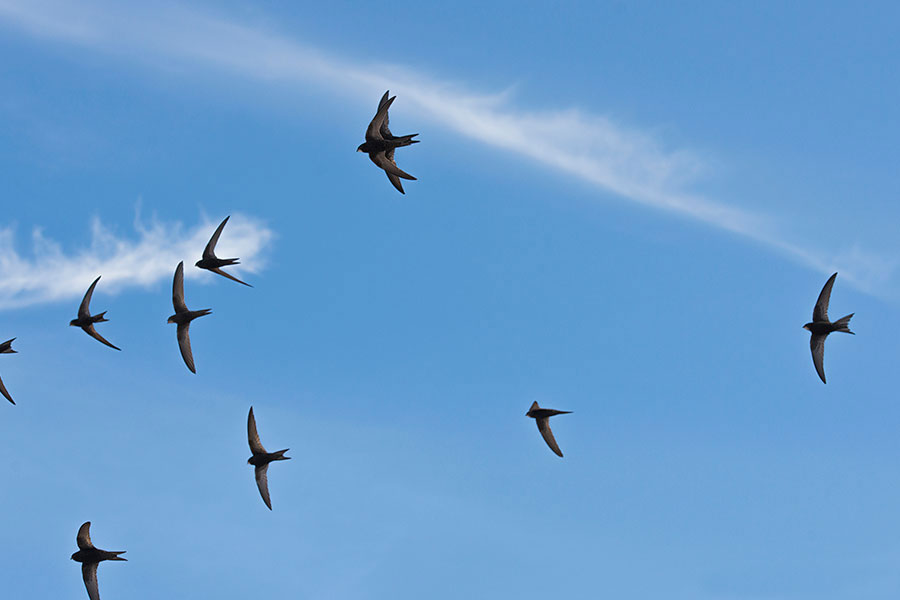
As swifts are clean and discrete, many people may not be aware that swifts are nesting in their homes or public and commercial buildings. Hence the parallel importance of mapping where swifts are currently nesting and building awareness of their plight amongst homeowners, planners, developers and builders and the simple solutions available to help secure their future.
Look out for swifts from May onwards and particularly from June into July when the parents descent at dusk from high-altitude feeding to gather in so-called screaming parties flying around at great speed at roof top levels. Watch carefully in your neighbourhood and you might then see a swift darting at high speed into a crevice or nesting box to feed its young. Record your sightings at Swift Mapper taking care not to disturb them.
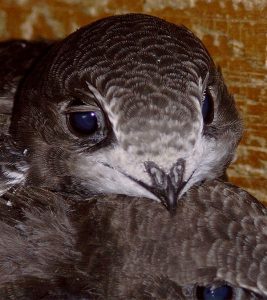
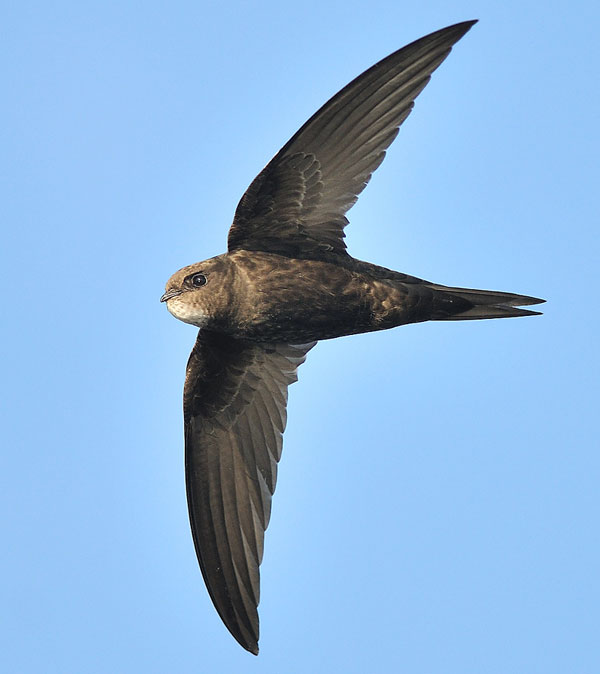
Whilst climate change and plummeting insect numbers are also likely to be contributing to the decline, putting up nesting boxes to help these birds felt empowering. I sensed in others in the local community I met that day – some for the first time – a shared feel-good factor uniting us through trying to make a small, positive difference to the fate of these heroic birds. The foundations are in place for building a series of other swift community initiatives (I’m one of the project coordinators as a member of Tisbury Natural History Society’s committee). Some towns even hold Swift Festivals bringing the local community together to celebrate their return.
Let’s not forget the need to build awareness of other birds who share our homes and are also in trouble. Swifts, house martins and swallows have amber status on the UK’s conservation list. House sparrows and starlings once perceived as common are now on the red list, the highest conservation priority, with species needing urgent action.
If like me (before this project), you can’t readily tell the difference between the summer migrants who like to share our homes and buildings, here are some identification tips.
Summer Migrants Sharing our Homes and Buildings Identification Tips
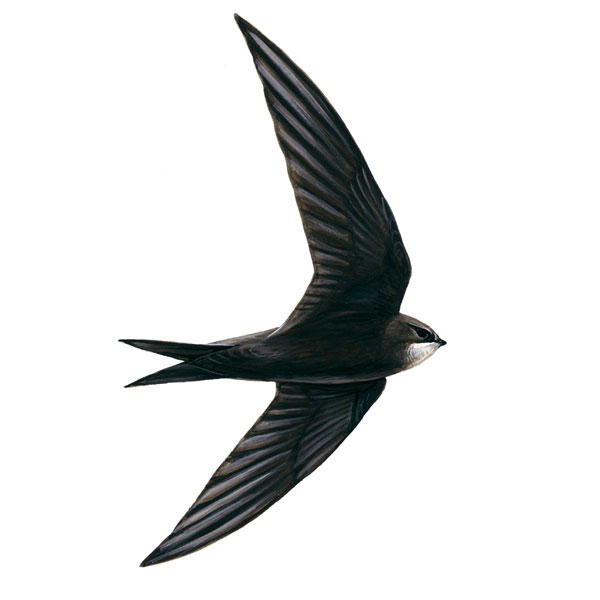
SWIFTS
Plain sooty brown appearing black in the sky with a cream throat. Long scythe-like wings and a short, forked tail. They have tiny feet and can hardly walk so you won’t see them on the ground or perched on wires.
Nesting: In holes in buildings, roofs or specially designed swift nesting boxes or swift bricks at least 4.5 metres above the ground. If you see a bird building a nest it’s not a swift!
In the UK: late April/May- August
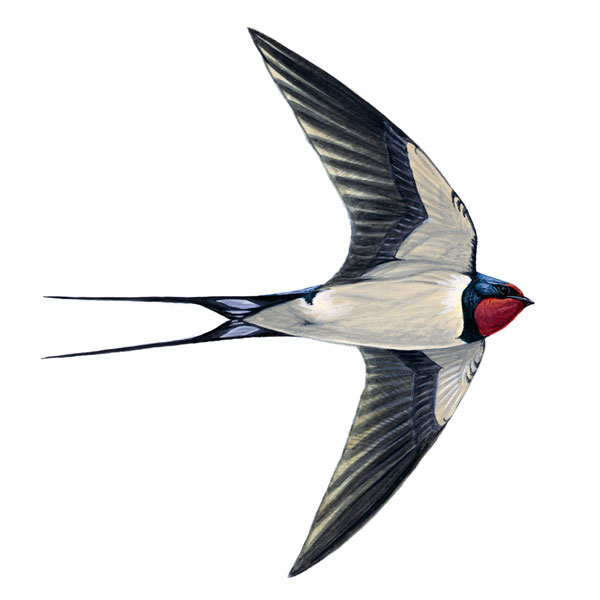
SWALLOWS
Dark, glossy-blue backs, red throats, pale underparts and long forked tail. Often seen perching on wires.
Nesting: In nests made of mud and dried grass in spaces such as outbuildings, stables and porches.
In the UK: March-October
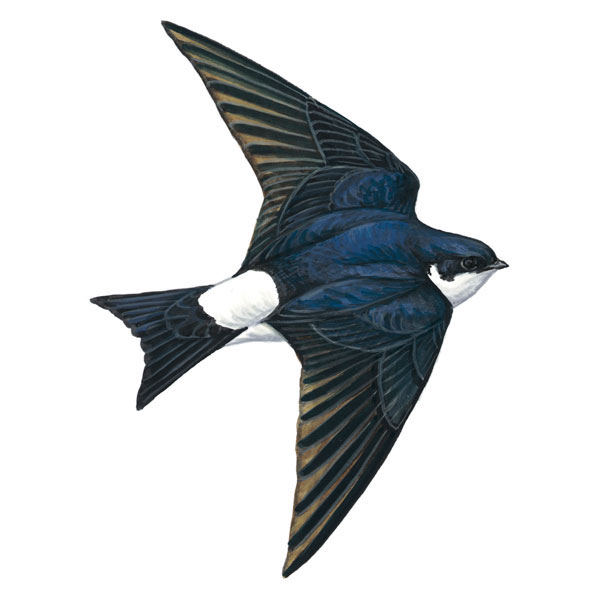
HOUSE MARTINS
Glossy blue-black upper parts, pure white under parts with a distinctive white rump and a much smaller forked tail than a swallow.
Nesting: Mud nests usually below the eaves of buildings.
In the UK: March/April-September/October.
Images: © Mike Langman (rspb-images.com)
Useful Organisations and Links
- Swift Conservation
Numerous helpful factsheets including:- Information for Homeowners – general advice on how you can help swifts
- Swift Nest Boxes at Your Home – advice on setting up a colony
- Creating Swift Nest Places in Soffits and Eaves
- Roof & Gable Repairs & Re-roofing with Swifts – how to repair or renew your roof without harming your swifts
- Installing Swift Nest Bricks
- How to Survey for Swifts
- RSPB
See their swift conservation page and links to:
- Action for Swifts
Access and share information about swifts and identify a local swift project near you through the Swifts Local Network.
- Swift Mapper
A web-based mapping system and mobile app for recording breeding swifts developed by the RSPB, Swift Conservation, Action for Swifts and Swifts Local Network. Watch out for groups of swifts flying fast at roof height, often screaming loudly which means they’re breeding nearby; or if you see swifts entering holes in buildings or nesting boxes. See the RSPB’s guidelines on How to use Swift Mapper.
- Hampshire Swifts
A conservation organisation working on initiatives and providing practical help to reverse the decline of swifts in Hampshire – and extending its support more widely. See also Swifts Local Network to identify organisations in your area.
References
- The British Breeding Bird Survey 2019, British Trust for Ornithology, Joint Nature Conservation Committee and Royal Society for the Protection of Birds, highlights a UK decline of 58% between 1995-2018; 57% for the period 1995-2017.


